Consider the following article
https://arxiv.org/pdf/2101.05907.pdf
It's a typically formatted academic paper with only two pictures in pdf file.
The following code was used to extract the text and equation from the paper
#Related code explanation: https://stackoverflow.com/questions/45470964/python-extracting-text-from-webpage-pdf
import io
import requests
r = requests.get(url)
f = io.BytesIO(r.content)
#Related code explanation: https://stackoverflow.com/questions/45795089/how-can-i-read-pdf-in-python
import PyPDF2
fileReader = PyPDF2.PdfFileReader(f)
#Related code explanation: https://automatetheboringstuff.com/chapter13/
print(fileReader.getPage(0).extractText())
However, the result was not quite correct
Bohmpotentialforthetimedependentharmonicoscillator
FranciscoSoto-Eguibar
1
,FelipeA.Asenjo
2
,SergioA.Hojman
3
andH
´
ectorM.
Moya-Cessa
1
1
InstitutoNacionaldeAstrof´
´
OpticayElectr´onica,CalleLuisEnriqueErroNo.1,SantaMar´Tonanzintla,
Puebla,72840,Mexico.
2
FacultaddeIngenier´yCiencias,UniversidadAdolfoIb´aŸnez,Santiago7491169,Chile.
3
DepartamentodeCiencias,FacultaddeArtesLiberales,UniversidadAdolfoIb´aŸnez,Santiago7491169,Chile.
DepartamentodeF´FacultaddeCiencias,UniversidaddeChile,Santiago7800003,Chile.
CentrodeRecursosEducativosAvanzados,CREA,Santiago7500018,Chile.
Abstract.
IntheMadelung-Bohmapproachtoquantummechanics,weconsidera(timedependent)phasethatdependsquadrati-
callyonpositionandshowthatitleadstoaBohmpotentialthatcorrespondstoatimedependentharmonicoscillator,providedthe
timedependentterminthephaseobeysanErmakovequation.
Introduction
Harmonicoscillatorsarethebuildingblocksinseveralbranchesofphysics,fromclassicalmechanicstoquantum
mechanicalsystems.Inparticular,forquantummechanicalsystems,wavefunctionshavebeenreconstructedasisthe
caseforquantizedincavities[1]andforion-laserinteractions[2].Extensionsfromsingleharmonicoscillators
totimedependentharmonicoscillatorsmaybefoundinshortcutstoadiabaticity[3],quantizedpropagatingin
dielectricmedia[4],Casimire
ect[5]andion-laserinteractions[6],wherethetimedependenceisnecessaryinorder
totraptheion.
Timedependentharmonicoscillatorshavebeenextensivelystudiedandseveralinvariantshavebeenobtained[7,8,9,
10,11].Alsoalgebraicmethodstoobtaintheevolutionoperatorhavebeenshown[12].Theyhavebeensolvedunder
variousscenariossuchastimedependentmass[12,13,14],timedependentfrequency[15,11]andapplicationsof
invariantmethodshavebeenstudiedindi
erentregimes[16].Suchinvariantsmaybeusedtocontrolquantumnoise
[17]andtostudythepropagationoflightinwaveguidearrays[18,19].Harmonicoscillatorsmaybeusedinmore
generalsystemssuchaswaveguidearrays[20,21,22].
Inthiscontribution,weuseanoperatorapproachtosolvetheone-dimensionalSchr
¨
odingerequationintheBohm-
Madelungformalismofquantummechanics.ThisformalismhasbeenusedtosolvetheSchr
¨
odingerequationfor
di
erentsystemsbytakingtheadvantageoftheirnon-vanishingBohmpotentials[23,24,25,26].Alongthiswork,
weshowthatatimedependentharmonicoscillatormaybeobtainedbychoosingapositiondependentquadratictime
dependentphaseandaGaussianamplitudeforthewavefunction.Wesolvetheprobabilityequationbyusingoperator
techniques.Asanexamplewegivearationalfunctionoftimeforthetimedependentfrequencyandshowthatthe
Bohmpotentialhasdi
erentbehaviorforthatfunctionalitybecauseanauxiliaryfunctionneededinthescheme,
namelythefunctionsthatsolvestheErmakovequation,presentstwodi
erentsolutions.
One-dimensionalMadelung-Bohmapproach
ThemainequationinquantummechanicsistheSchrodingerequation,thatinonedimensionandforapotential
V
(
x
;
t
)
iswrittenas(forsimplicity,weset
}
=
1)
i
@
(
x
;
t
)
@
t
=
1
2
m
@
2
(
x
;
t
)
@
x
2
+
V
(
x
;
t
)
(
x
;
t
)
(1)
arXiv:2101.05907v1 [quant-ph] 14 Jan 2021
As shown:
- The spacing, such as the title, disappeared and resulted meaning less strings.
- The latex equations was wrong, and it got worse on the second page.
How to fix this and extract text and equations correctly from the pdf file that was generated from latex?
